Description
Day 1
Arrive in Delhi where you will be met at the international airport by your tour leader who will travel with you for the next 18 days. Transfer by private car to your hotel and relax for the rest of the day before taking an overnight Volvo bus to Manali. Overnight bus journey. Dinner & breakfast.
Day 2
Arrive in Manali (1995m) and check in to your hotel. The remainder of the day is free to relax and to walk around the town to help with acclimatization. Johnson’s Lodge or similar. Dinner & Breakfast.
Day 3
Bikes and riding around town. Morning bike fitting and acclimatization before an early afternoon ride to Naggar and Roerich art Gallery (19kms one way). The evening is free to explore the local surroundings. Manali is surrounded by beautiful fir and pine forests and there are lovely walks in and around the town. There is also a colourful Tibetan bazaar famous for its shawls, caps, jewellery and handicrafts made by Tibetan refugees. Johnson’s Lodge or similar. Breakfast, lunch & dinner.
Day 4
Uphill to Camp at Marhi – 35 Km, 5-6 Hr, elevation gain 1250m. Today we start our first full day of biking on one of the classic cycle routes in the world. We start climbing right from Manali through the flower-filled valleys and cedar and fir forests, passing through numerous villages. After the last village, called Kothi, we will cycle up lots of hairpin bends which bring us to the Rohalla Falls. We will then ascend into a small valley after where we will reach our camp for the night at Marhi. Camp. Breakfast, lunch & dinner
Day 5
The first pass ROHTANG, Marhi – Sissu – 53kms, 5-6 hours, elevation gain 1600m. We leave early and leave all habitation behind as the road zig zags higher and higher into the mountains. We feel as though we are entering a different world as we reach the top of the Rohtang La (3978m). This barren windswept pass, blocked by snow for more than six months of the year, crosses the Pir Pinjal Range and is the gateway to Ladakh. An exciting downhill of 22 kms down to Khoksar village, thereafter we take a short detour and climb to the meadows and small villages to finally descend to Sissu. Camp. Breakfast, lunch & dinner.
Day 6
‘Lahaul’ Sissu – Jispa – 64 Km, 6-7 Hr, elevation gain 600m. We are in the Lahaul Valley and the cycling becomes easier as we continue on to Tandi, where the rivers Chandra and Bhaga come together, to flow as Chandrabhaga or Chenab as it is known in the Chamba valley. From Tandi it’s a short climb to Keylong, which soon continues through some switchbacks to descend to Jispa 37 kms from Keylong. Camp. Breakfast, lunch & dinner.
Day 7
Entering the Higher ground – Jispa – Patseo – 32 Km, 3-4 Hr, elevation gain 500m. Another fairly easy day for acclimatization as we are now approaching the Great Himalayan Range. We cycle through beautiful green pastureland to Darcha (3235m) where we can enjoy a cup of tea or coffee at a local restaurant. From here we continue climbing, until we reach Patseo (3650m). The site now of a lone tea house Patseo used to be the place of an annual fair of the Changpa nomads. Camp. Breakfast, lunch & dinner
Day 8
The second pass – Patseo – Sarchu Plains – 60 Km, 6-7 Hr, elevation gain 1400m. A hard day today as we cross the Himalayas to Sarchu. Sarchu is the border between the states of Himachal Pradesh and Jammu, Kashmir and Ladakh. After a gradual climb across large meadows past Zingzingbar we start our long ascent to the Baralacha La Pass (4892m). The climb seems at times to go on forever but the hard work is worth it as the views become increasingly spectacular. Finally we reach the top – we are in the middle of the mighty Indian Himalaya. The word Baralacha means ‘a pass with crossroads’ and the trails from Zanskar, Ladakh, Spiti and Lahaul come together here. This is the main crossing of the Great Himalayan Range and we get amazing views of the many snow-covered peaks including Barashigri, Chandrabhaga and Mulkila. From the pass the cycling gets easier as we descend past Kiling Serai and on to Sarchu. Camp. Breakfast, lunch & dinner.
Day 9
A hard day’s night – Sarchu – Pang – 84 Km, 8-9 Hr, elevation gain 1200m. This will be our longest and hardest day of cycling so we will set off early. We start by climbing fairly gently for approximately 38 km across the windswept Sarchu Plains past Brandy Nallah and Whisky Nallah to the bottom of the Gata Loops. This is a series of 22 amazing hairpin bends, which we slowly ascend. Take time to stop and look back – the valley behind is full of amazing wind eroded rock formations. At the top of the loops we will have climbed 500 meters and reached the Nakli La 4800m. A short downhill is followed by another winding ascent to our second pass of the day, the Lachalung La at 5100m. We are now crossing the barren Zanskar Range and we are surrounded by amazing multi-coloured mountains – the purples, greens and browns of the hillsides change shades as clouds are blown across the sky. From the Lachalung La we have an easy ride down through an amazing canyon of magnificent rock formations of the Trans Himalaya until we reach Pang. Camp. Breakfast, lunch & dinner.
Day 10
Into thin air – Pang – Tso – Kar – 57 Km, 4-5 Hr, elevation gain 400m. We start slowly with a short ascent to the Mori Plains (4700m). We are now in Rupshu, the water-less high altitude desert of the Tibetan Plateau. This area is all above 4500m and is home to the hardy Changpas, Tibetan nomads who live in yak hair tents and graze huge flocks of sheep and yaks in this seemingly barren landscape. We turn off the main road and cycle along a sandy track to Tsokar Lake where we camp for the night near Pongunagu. Tsokar means ‘white lake’, and there are white salt deposits ringing the water. Our camp is a few kilometers from the lake but for the energetic there will be time to cycle to the lake, or even around it to visit some of the nomads. Look out for herds of ‘kiang’, the wild asses which roam the surrounding hills. The lake is also good for birdwatchers. Camp. Breakfast, lunch & dinner.
Day 11
The Big Ascent – Tso Kar – Rumptse – 80 Km, 6-7 Hr, elevation gain 900m. A hard day today as we cross the last pass before Leh, the Taglang La. We leave Tsokar and cycle back to the main road. The long climb starts gradually and winds ever higher and steeper to the top of the Taglang La (5350m). You should be proud of yourself at the top – you have just cycled to the top of the second highest motor-able road pass in India! We are rewarded for all our hard work with wonderful views of both the Himalaya and the Karakorum Mountains. After a rest and photo stop we have a wonderfully long zig-zag descent to our first real villages since Lahoul. The houses and green fields of barley and potatoes greet us as we reach our camp at Rumptse. Camp. Breakfast, lunch & dinner.
Day 12
Rumptse – Leh – 82 Km, 7-8 Hr, elevation gain 450m. We start early with an easy ride winding down following the Kyamnar River down to Upshi. Here we join the Indus Valley, which we follow all the way into Leh. But first we have a diversion to visit Hemis monastery, once the largest and richest of all Ladakhi monasteries. To get there we have a 7km climb as the monastery is tucked away up a side valley. There is time to visit the ancient temples with priceless Buddha statues. We then cycle down to the main road and follow the mighty Indus River. From Karu we continue on to Tikse, where an impressive monastery sits perched on a hilltop. If there is time we can cycle up to the monastery, which contains a very impressive two-storey statue of the Future Buddha. Passing the ruins of Shey Palace the cycling is fairly easy as we come to Choglamsar, home to many Tibetan refugees. There is a final sting in the tail as we leave the Indus and climb into Leh. Tonight we can enjoy the comforts of a hot shower in our hotel in Leh. Hotel. Breakfast, lunch & dinner.
Day 13
Explore Leh – a day of optional activities (extra cost). We have a rest day on ourselves. Options are open to make day trips to Pangong Lake (8 hrs to and fro journey or going rafting on the Indus (2 hours). The best idea is cycling down to Nimmu and start rafting there. Hotel. Breakfast, (packed lunch) & dinner.
Day 14
The Big Climb – Khardungla Pass 80kms, elevation gain 2100m (optional included cost). For the energetic today there is the challenging ride to the Khardung La (5602m), arguably the highest motor-able road pass in the world. After the last 10 days we should now be fully acclimatized to the altitude and mountains. We leave Leh early and take a packed lunch. It will take around 6 hours to cycle to the top of the pass. The views are magnificent as we wind our way higher and higher away from Leh. The first half of the ride is tarmac and the last half is rough road. From the top we are rewarded with close-up views ahead of the Karakorums, while behind us the Ladakh and Zanskar mountains seem to stretch forever. After a photo stop we have a fantastic downhill ride back to Leh – a great reward for all the hard work this morning!….. and Celebrations tonight!! Hotel.
Day 15
Go to Hemis Monastery – once in every 12 years the Kumbh Mela Festival takes place here. Hemis, the biggest in Ladakh will celebrate one thousand and 12 years of Buddhist yogi Naropa’s visit with a month-long festival of dance, music and religious teachings in 2028. An 11th century saint, Naropa was believed to have been born a prince into a royal family in Kashmir and the king and queen besides the kingdom’s subjects agreed it was not befitting for Naropa to dwell in the midst of worldly people and that he should be among practitioners of the Dharma. Hence, he was sent off to be educated at the Nalanda University where he debated with Buddhist scholars and eventually became one of the gatekeepers at the institution. Titled “Kumbh Mela of the Himalayas,” the festival, derives its name from the mass Hindu pilgrimage held every three years in Uttar Pradesh and on similar lines seeks to bring not only the different sects of Buddhism but also people from across the globe together both physically and spiritually. The Kumbh Mela is something that is holy and well known but many people in the Himalayas have no idea about it. The festival will be a very holy and spiritual experience. Lots of people will gather to see big ceremonies. Therefore, it is called the “Himalayan Kumbh Mela”. The festival is expected to be an extended rendition of the annual Hemis festival observed at the monastery that celebrates Guru Padmasambhava’s birth anniversary, with monks donning traditional silk costumes and brightly painted masks dance to the sounds of instruments like longhorns, cymbals and drums.
However, since he is believed to have been born in the Monkey year, which comes every tweleve years, of the Tibetan calendar as predicted by the Buddha Shakyamuni, a four-storey high silk embroidery (Thanka), portraying Guru Padmasambhava donning pearls and semi-precious stones is displayed along with an exhibition of Naropa’s ornaments, is held on the occasion. The devotional art piece was last exhibited in the year 2004.
Hotel. Breakfast, packed lunch & dinner.
Day 16
Visit Thikse Monastery and time for further exploration around Leh.
Hotel. Breakfast, packed lunch & dinner.
Day 17
Early morning return flight to Delhi. Transfer by car to hotel before afternoon sightseeing in Old and New Delhi, including Raj Ghat, cycle rickshaw through the streets of Old Delhi to the mosque, Humayun’s Tomb, Government buildings and India Gate with a local guide and transport. Enjoy an evening at a local restaurant and your “Last Supper” as a group. Hotel Vikram. Breakfast.
Day 18
Tour ends – transfer to airport – return home or onward travel.
Includes
|
Excludes
|
Price £2345 per person, based on a twin-share
Inclusions:
1. Transport in Overnight Himachal Tourism Volvo Coach from Delhi to Manali.
2. Accommodation in Johnson’s Lodge or similar in Manali
3. Luxury Camping through the course in large tents with beds, Blankets and Quilts.
4. 3 Toilets with WC through camping days.
5. Large dining tent wide enough to space 20 people with Camping chairs and Tables.
6. Breakfast (Cereals, Eggs to Order, Bread, Juice, Coffee/Tea, Fruits, and Indian fare. Follows a cyclic menu through camping days)
7. Hot vegetarian lunch served everyday at the Lunch stop. (Indian fare, Pasta, Breads etc)
8. Snacks upon arrival at camp, fresh from the BBQ by the bonfire (few days)
9. Dinner including one non vegetarian dish, following a cycling menu with different cuisines.
10. Three Support vehicles. One Double camper for camp equipment, One 12 seater Mini Traveler as sweep bus, and One SUV as route opener and support.
11. Wireless communication between Support vehicles.
12. Bottled water.
13. Nutrition Pack everyday including dry fruits, Gatorade, Enerzal/ORS, Snickers chocolate bars, Granola bars, Bananas, Boiled eggs, Boiled Potatoes.
14. Oxygen Cylinders and High Altitude Medicine Kit. In the scenario of an emergency (Acute Mountain Sickness) we only evacuate back to Manali or Leh and discontinue the ride for the rider.
15. A cycling Jersey.
16. A Hard tail Mountain Bike good for doing the Manali to Leh cycling trip. 21speed.
17. Services of a Mechanic through the trip.
18. Services of a Guide through the trip.
19. All Necessary permits and permissions.
Questions & Answers about the trip:
HOW FIT DO YOU NEED TO BE FOR A MOUNTAIN BIKE TRIP?
While we assume that all participants are experienced mountain cyclists, it is essential that you arrive in Delhi in good physical condition. Mountain bike riding in mountainous regions is much more physically challenging than touring on surfaced roads in your home town in most instances. Solid preparation is essential in the months leading up to your departure. Regular biking (four to five times a week) for at least one to four hours, with as many hills as possible, will well prepare you for the trip. It will also allow you to familiarize yourself with your bike, your personal clothing and equipment, and your preferences for fluid and food intake whilst exercising. You can also combine biking with other aerobic exercise such as running, swimming or gym work for variety. Consistency is the key, so that you build aerobic fitness, leg strength and stamina. Age or gender is not the main determining factor in your fitness preparation; it is your commitment to a good training regime, thorough preparations of your gear and a positive approach to the whole expedition (in the good and bad times!).
BIKING ASPECTS
A Hard-tail, 21 speed mountain bike is supplied to you for the trip. The roads generally are not suitable for bikes fitted with road tyres (slicks), even though some sections are in reasonably good condition. There will be sections higher up that will be in poor condition due to snow/slush from the winter months, possible landslip, and use of the road by heavy vehicles at times. Hybrid bikes with ‘chunky’ mountain tyres are most suitable. Any damage or spare need shall have to be borne by the rider.
You can also bring your own bike with you but riders should also bring a range of spare parts which may include; chain links or chains, spare tyres and pump, at least 4 spare tubes and puncture repair kit, cables, pedals and a good tool kit.
Though there would be a mechanic accompanying us carrying a good repair kit and spares but it is still necessary for everyone to bring some spares; this also ensures you have parts that will fit your bike. There will be a staff member to assist with running repairs when we are biking and at our overnight stops should problems be more complicated. As a general rule, less complex or high tech bikes are easier to fix and obtain parts for if necessary. If you plan to buy a new bike before the trip, make sure you are completely familiar with it prior to departing. You should fit at least 2 one liter water bottles to your bike. Water will be available from the back up vehicle.
DAILY ROUTINE
Our cycling expedition takes us into remote regions where there are no villages and no hotels. Therefore during the cycling expedition we will be camping. We will select camps away from the road where you will sleep in comfortable two person tents and be looked after by our crew who will come with us. They will prepare all meals including your early morning cup of tea. All you have to do is pack your gear into your kitbag. During the day you will be accompanied by a support vehicle which is at your disposal should you not wish to cycle. Your other entire luggage will go into the luggage van accompanying us.
MEALS
Our menu is based on fresh food to provide three nutritious, plentiful and tasty meals daily. Breakfast is a selection of cereal, muesli, and porridge, followed by chapatti, puri and local breads. An egg dish usually completes the meal. Lunch is a selection of salads, pasta, traditional breads, and cheese and potato dishes. Our evening meal commences with soup and is followed by rice, pasta and a range of vegetable and meat dishes. Fruit or a local dessert completes the meal. Tea, coffee, hot chocolate, cordial and biscuits are provided at meals and on request in camp. We can cater for specific dietary needs if we know in advance. First-time campers are pleasantly surprised at the quality of the meals.
HEALTH
You can expect to remain healthy throughout the trip. All food is hygienically prepared, cooked and served. Our kitchen crew is well trained and conscientiously adheres to strict hygiene guidelines. All water is boiled to ensure it is safe to use. And for drinking purposes we use bottled mineral water.
CREW
Our local crew is professional guides dedicated to providing the best experience possible. They have a high level of competence in wilderness and emergency medicine. We travel as a self- contained expedition ensuring that we do not deplete limited local food resources and provide valuable employment for the local people. We enjoy the company of the crew members with whom we share our days. Guides will ensure we take the right road, kitchen hands prepare our food and do the washing up, the skilled cook’s meals will please you, the support vehicle drivers ensure that you have good back up and your gear is kept safe during the day. The times you spend with these people – walking, talking, playing games – will often be the fondest memories of your trip.
FIRST AID
The majority of our leaders have appropriate wilderness first-aid training and are experienced in dealing with a range of medical problems associated with adventure travel. We recommend that you bring your own personal first aid kit consisting of the following: A broad spectrum antibiotic, antiseptic cream, throat lozenges, diarrhea treatment (Immodium), aspirin, plasters and blister treatment, insect repellent (DEET), sunscreen and multi-vitamin tablets are a good idea.
The whole route in stages:
Manali – Rohtang La (52kms): Fun starts within an hour of leaving Manali, as you make your way to the first high altitude pass, Rohtang La 13,050ft, a.k.a. heap of dead bodies!
Roads are mostly in good condition and within an hour of leaving Manali, you should be at Marhi (19kms before Rohtang); you can have your breakfast here or at Rohtang Parking, followed by a quick stop at the Rohtang pass for photos.
Rohtang La – Kokhsar (19kms): Even though road from Rohtang to Kokhsar is downhill all the way, it is mostly in bad condition. Foreign nationals are supposed to get themselves registered at the check post in Kokhsar, apart from that, this small town has little to offer unless you want to have a quick meal or want to spend the night at the only guest house in town.
Kokhsar – Tandi (38kms): Journey from here is also downhill till Tandi and roads are mostly in a state of disarray. Tandi has the last petrol pump before Leh, roughly 380kms from here. So do not forget to tank up before moving on to Keylong.
Tandi – Keylong (9kms): Keylong is the last place where your mobile phone will work before you reach Leh and also the last place where you can hope to find a mechanic, in case you are having some problems with your vehicle get it checked ASAP! Also this is a preferred stop over for many who decide to split their journey in to three days or more.
Keylong – Darcha (28kms): From Keylong roads are in somewhat better condition and only get smoother as you approach Jispa and eventually Darcha. Once at Darcha, take a break and tank up on supplies and get yourself registered at the check post here.
Darcha – Sarchu (84kms): Roads are mostly in bad shape and as the altitude increases, you might start noticing the first effects of Acute Mountain Sickness. It is advisable to take it easy and do not over stress yourself, especially at the summit of Baralacha La, 16,500ft. From Baralacha La it is again a downhill but a rough ride till Bharatpur, after which the road condition starts improving gradually as you approach Sarchu.
Sarchu, at an altitude of 14,000ft, is a collection of tents and a militarily base. Even though it is quite a windy place and high in altitude, it is the prefer night stop for most travelers. You will need to register at the check post in Sarchu before proceeding further.
Sarchu – Pang (80kms): Roads from Sarchu till the start of Gata Loops are in good condition and the progress is fast.
Gata Loops are a collection of 21 loops that take you to an altitude of 15,302 ft, roads in the loops are in not so good condition and the slow moving trucks leaving cloud of thick smoke make the ascent feel tougher than it actually is.
Next up is the third pass on the Manali Leh route, Nakee La, 15,547ft. While few km down the road is Lachulung La pass situated at an altitude of 16,616 ft.
The descent from Lachulung La will take you to Pang, which is a temporary tent settlement and has a check post where travelers need to register themselves. Take a breather here and eat something for the final push to Leh.
Pang – Upshi (125kms): The road from Pang will take you to the famous Moore Plains; situated in a plateau, you will be hard-pressed to believe this relatively flat piece of land is located at an altitude of 15,400ft. Road here are relatively straight and in good condition, inviting you to indulge in speeding. But do not! Road is quite bumpy and it will be a good workout for your vehicles suspension and your stomach.
Upshi – Leh (55kms): A small break for a cup of tea/coffee at Upshi to unwind is recommended before you continue your journey on the Manali Leh highway to reach Leh, less than an hours drive from Upshi. You can also spend the night in Upshi in case you are too tried to continue with the journey.
Acclimatization and Acute Mountain Sickness (AMS)
Altitude can be categorized into the following scales –
High (8,000 – 12,000 feet [2,438 – 3,658 meters])
Very High (12,000 – 18,000 feet [3,658 – 5,487 meters])
Extremely High (18,000+ feet [5,500+ meters])
Generally, people can go up to 8000 feet without much problems of mountain sickness. As you start to increase altitude, the barometric pressure starts to decrease which reduces the Oxygen intake per breath. Now, in order to compensate for the less Oxygen intake, your body need to increase the breathing rate. Although the increased breathing rate does increase the Oxygen level in the blood but it does not take the Oxygen level to the same level as required by the body while you are at home doing some activity. By spending proper amount of time at such altitude your body will adapt to such changes in Oxygen levels and this process is called as acclimatization. Always keep in mind that different people will acclimatize at different rates. Hence, always try to avoid any sought of comparison and wait for the person suffering in the group better acclimatize.
Acute mountain sickness (AMS) is caused above the altitudes of 10,000 Feet or 3,048 meters to majority of people. Higher is the elevation and rate of ascent, more will be the effects of AMS. Hence, do not try to directly go or stay at very high altitudes directly. When you sleep, the symptoms will get worse as our body respiration decrease while sleeping.
The best cure is either to acclimatize properly or descend. However, effects of mild AMS can be cured by taking some preventive AMS medicines like headache pain relief or Diamox with proper consultation and prescription with your doctor or physician prior to the start of the trip. Diamox is a sulfa drug and does have side effects including allergies. Hence, Diamox shall only be taken after proper prescription by your doctor or physician. Diamox can also be helpful in case a person suffer from periodic loss of breath, which especially occurs in the night while sleeping.
In case, you feel the personal is suffering badly then ask him to walk in a straight line by placing toe to toe. If the person is not able to walk in a straight line i.e. he is suffering with ataxia. IMMEDIATELY DESCEND!!
Tips for Better Acclimatization:
Below are few tips that will certainly help you in better acclimatization:
Increase the altitude gradually
The acclimatization rules states that after 10,000 feet we must stay overnight for every 1000 feet or 305 meters of elevation in order to properly acclimatize our body. This schedule in between shall allow a complete day acclimatization rest after 3000 feet or 915 meters with overnight stay at the same altitude.
Keep your body properly hydrated
Do take plenty of intake of water or fluids like tea, juice, soup (garlic one will do wonders). If possible, take ORS solute water to replenish the lost nutrients immediately. This will help keep the oxygen level to normal in the body. You should avoid too much black tea or coffee as well…WE RECOMMEND NO ALCOHOL
Avoid sleeping at high altitudes
As sleeping decrease the respiratory drive of our body, it is recommended that one shall hike to high altitudes in the day but should always come back to by the evening to sleep at lower altitude.
Avoid over exertion
Do not over exert your body with any unnecessary physical activity which may lead you pump more breath.
Avoid tobacco and smoking and alcohol and other depressant drugs
Avoid tobacco and smoking and alcohol and other depressant drugs including, barbiturates, tranquilizers, and sleeping pills. These depressants further decrease the respiratory drive during sleep resulting in a worsening of the symptoms.
Keep your body warm
Keep your body warm with woolens and do not let it cool. Make sure your clothes are always dry.
Eat lots of Carbohydrates
Eat a high carbohydrate diet (more than 70% of your calories from carbohydrates) while at altitude.
Avoid sleep during the day
Try not to sleep during the day and keep yourself involved in some light activity during the day. Respiration decreases during sleep which further exacerbate the symptoms.
Sleep in upright position, if possible
Try to lay down or sleep by resting your back against the wall. If you cannot sleep in such mode then do not flatten your head on the bed rather place a bag below your head and then one or two pillows and then sleep in such a posture. It will help you keep your head much lighter.
Carry Small Oxygen Cylinder or Bottle
If possible although not necessary, you may also carry a small oxygen cylinder to counter the AMS symptoms. It will certainly help as a supplement but do take proper consultation from your doctor for the intake amount of oxygen, before the trip. SPEAK WITH YOUR OWN DOCTOR BEFORE DOING THIS TRIP TO ASK FOR ADVICE
Immediately descend, if symptoms increase
Last but not the least, if the AMS symptoms start to increase then you should consider immediate descend. This is the only cure in some conditions when the symptoms have reached moderate levels and are not decreasing.
AMS SymptomsAMS LevelPossible Cure
Headache, dizziness, fatigue, shortness of breath, loss of appetite, nausea, disturbed sleep, and a general feeling of malaiseMildMedication or Decend
Decreased coordination (ataxia), Severe headache (not relieved by medicine), other mild level symptoms with increased affectModerateAdvanced Medication or Descend about 305-610 Mtrs
Inability to walk, decreasing mental status, and fluid build-up in the lungsSevereImmediate Descend about 610-1,220 Mtrs
| AMS Symptoms | AMS Level | Possible Cure |
| Headache, dizziness, fatigue, shortness of breath, loss of appetite, nausea, disturbed sleep, and a general feeling of malaise | Mild | Medication or Descend |
| Decreased coordination (ataxia), Severe headache (not relieved by medicine), other mild level symptoms with increased affect | Moderate | Advanced Medication or Descend about 305-610 Mtrs |
| Inability to walk, decreasing mental status, and fluid build-up in the lungs | Severe | Immediate Descend about 610-1,220 Mtrs |
Things to carry when you go out on a trip
| There are so many of us who likes traveling to the core ofour souls and keep on visiting new, beautiful places every now and then.Sometimes the plan arises out of nowhere and you have no time to think aboutcontents of the luggage for the trip. Most of the time in these cases, weforget one or more essential things to carry while going on a trip. You canimagine a situation where you need to rush and search desperately for a smallthing such as soap where even a tissue paper would have come handy.
Since luggage is most common among any kind of traveler, itwould be great to always have a list of things to carry on a trip, in store foryourself. It would certainly be extremely handy when the plans are abrupt andcome out of nowhere, leaving no time for packing the luggage. I have tried tocompile a comprehensive list of thing to carry while I go on a trip and feelcould be helpful for each one of us traveling to various places. Basic Travel Kit |
Eateries Chocolates, toffees, chips, chewing gums, mouth fresher, dryfruits etc Camera Kit Toiletries Shaving Kit Clothing Kit |
| Mountains Must Haves: Digital Thermometer Cold Cream Lip Guard Hats / Caps Heavy Woolen Clothing including woolen socks (Severe Cold /Snow) Woolen Hand Gloves (Severe Cold / Snow) At least 2 pairs of thermal. Trekking Must Haves: Medicine or First-aid Box: BOOKING |
BEAR IN MIND:
The itinerary is reflective of the best possible way toaccomplish the journey. Come prepared to expect rain, snow, weather changeswhich may result in landslides, road blockades leading to changes in the plan. The costs incurred thus are to be borne directly at the timeof occurrence. Though when organizing we try to adjust, however if noalternative exists then the extra costs will be incurred directly by theguests. Permits required need to be made in advance. Keep thepermits handy at all times. In case of an emergency requiring immediate rescue, utmostcare is taken to evacuate immediately however the costs incurred will be borneby the guests. This is not a deterrent if the guests are unable at that time,don’t worry it can be settled later. A signing of an indemnity form is essential. Respect the local culture. Avoid drinking |




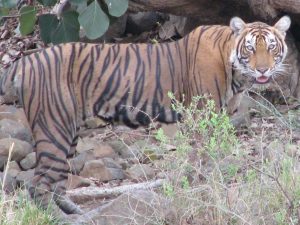
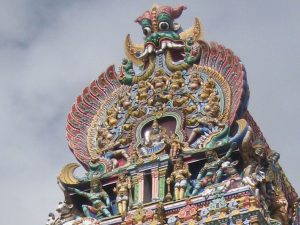
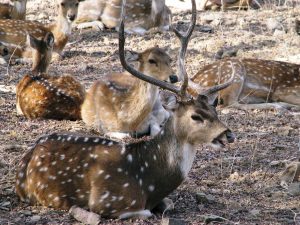
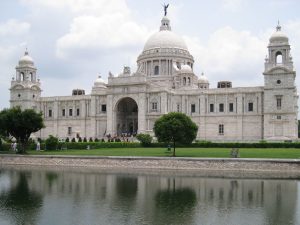
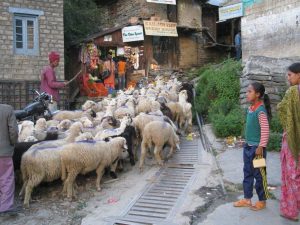

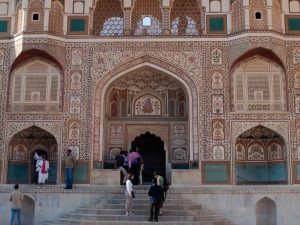
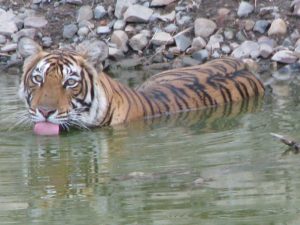
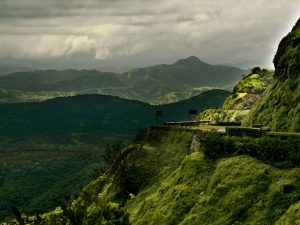
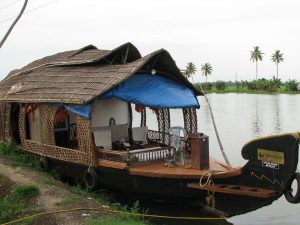
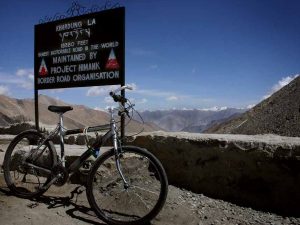
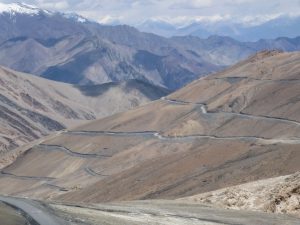
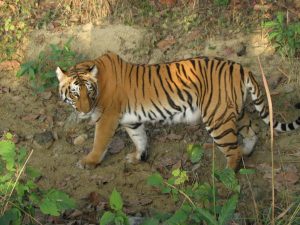
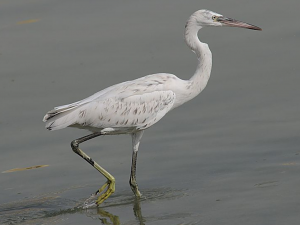
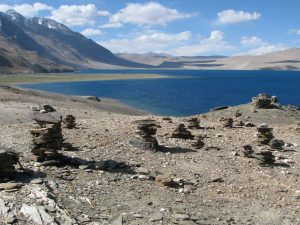
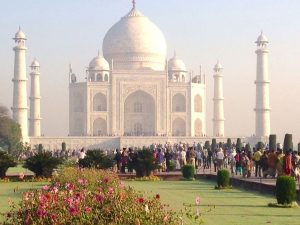
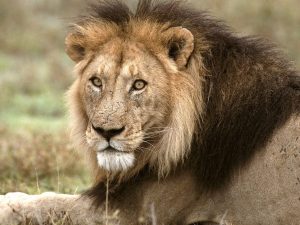
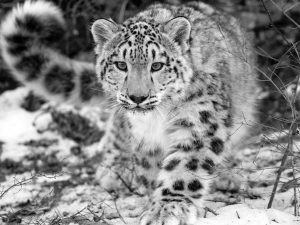
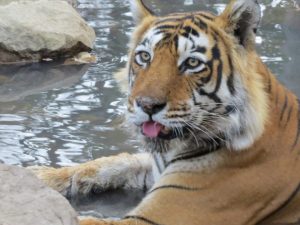
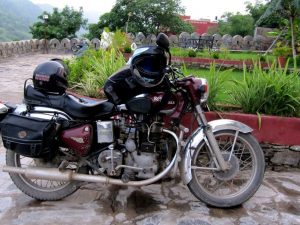
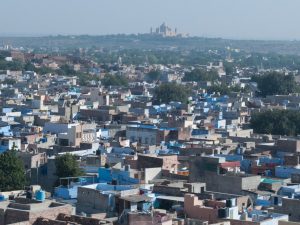
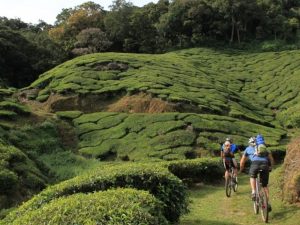
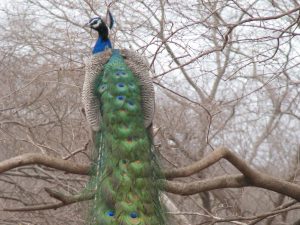
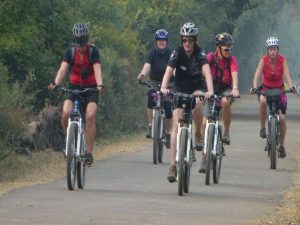
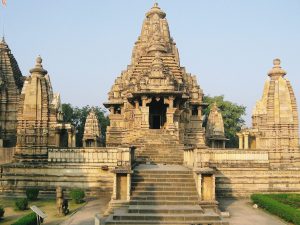
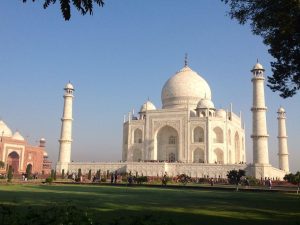
Reviews
There are no reviews yet.